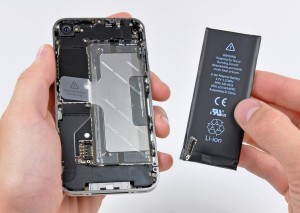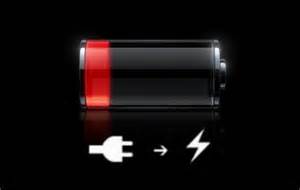Battery Life ‘Holy Grail’ Discovered. Smartphones May Last 300% Longer
The vast majority of all today’s batteries are so-called ‘Lithium Ion’ batteries. They have three core parts: an electrolyte which provides electrons (the essential part of electricity), an anode which discharges these electrons into a device giving it power and a cathode which receives the electrons back into the battery after they have been passed through the device’s circuit.
Where the problem lies today is the lithium in ‘lithium ion’ batteries is contained in the electrolyte but not in the anode (which is typically graphite or silicon) so the electrons cannot be harvested very efficiently before they are sent out to the device. Produce a pure lithium anode, however, and efficiency – and therefore performance – skyrockets. The quest to do so has been going on for decades.
 The issue in making a pure lithium anode is that lithium ions expand in hair-like structures when a battery is charged. This expansion can be so strong that it can warp and crack the battery casing and, even if it could be contained, the anode is so chemically reactive that it consumes the electrolyte and the battery’s ability to recharge declines rapidly. Previous scientific research produced a pure lithium anode battery that was 96 per cent efficient but that still meant its ability to charge fell to almost 50 per cent after just 100 charge cycles. Nowhere near good enough for the average lifespan of a smartphone, notebook or an electric car.
The issue in making a pure lithium anode is that lithium ions expand in hair-like structures when a battery is charged. This expansion can be so strong that it can warp and crack the battery casing and, even if it could be contained, the anode is so chemically reactive that it consumes the electrolyte and the battery’s ability to recharge declines rapidly. Previous scientific research produced a pure lithium anode battery that was 96 per cent efficient but that still meant its ability to charge fell to almost 50 per cent after just 100 charge cycles. Nowhere near good enough for the average lifespan of a smartphone, notebook or an electric car.
Researchers at Stanford University report they have designed a pure lithium anode with the potential to increase the capacity of existing battery technology 400%.
Many new smartphones are already equipped with high capacity batteries too. Samsung’s Galaxy Note II, for example, sports a battery with a capacity of 3,100mAh, which is considerably larger than that in smaller phones such as the iPhone 5S. The downside to extra capacity, though, is that it takes even longer to charge your battery – with over three hours common for the Galaxy Note II even using a wall socket and not a PC or laptop. Battery capacity is getting close to its limits. In fact the energy density – the amount of amp hours you can pack into the tiny volume of a battery is coming close to hitting a wall. Our view has always been that there’s so much you can do by expanding the operating envelope of the battery by applying intelligent software and hardware to stretch the limits of the current material system.
Battery vendors are very concerned with the next material system – future technology to boost capacity, but this is very complicated and very expensive. Our method comes from what the automotive and aircraft engine industries have done, which is to measure the performance of their products in real time and created closed loop systems to really monitor what’s going on and improve efficiency.
 Holy grail of battery design can offer increased battery lifetimes, or charge cycles. This is how long your battery will last before it begins to be unable to hold as much charge – typically a few hundred charge cycles. Typically people find that after six months or so, heavy users might not be able to get through the day any more on a single charge.
Holy grail of battery design can offer increased battery lifetimes, or charge cycles. This is how long your battery will last before it begins to be unable to hold as much charge – typically a few hundred charge cycles. Typically people find that after six months or so, heavy users might not be able to get through the day any more on a single charge.
However, what we’ve really been pushing is fast charging, which is much more tangible to the end user. With capacity getting bigger, charge times are often dismally slow – three or four hours in some cases. We can use out technology to put a lot of charge into the phone quickly without damaging the Asus a42-u36 battery. One analogy is that of a freeway or motorway. Five years ago battery capacity was so low it was like driving on a Sunday morning and you’re flying on it – there are few cars. This is what it would be like for the lithium travelling from the anode to the cathode. With today’s higher capacities, the freeway is a lot busier and the ions are competing with each other. What we have created is essentially a system that can provide traffic management to synchronize how the traffic moves. You can then optimize that flow inside the battery and reduce charge times as a result.


1 thought on “Holy grail of battery design could boost power capacity and extend battery life”
Comments are closed.